#bitesizedcodingwithyoungwonks 검색 결과
A list is used to store multiple #items. Shared here is an example of a list called Fruits. Follow us for more such #bitesizedcodingwithYoungWonks #pythonprogramming #kidscoding #lists #learningresources #pythoncheatsheet #Python #coding #programming
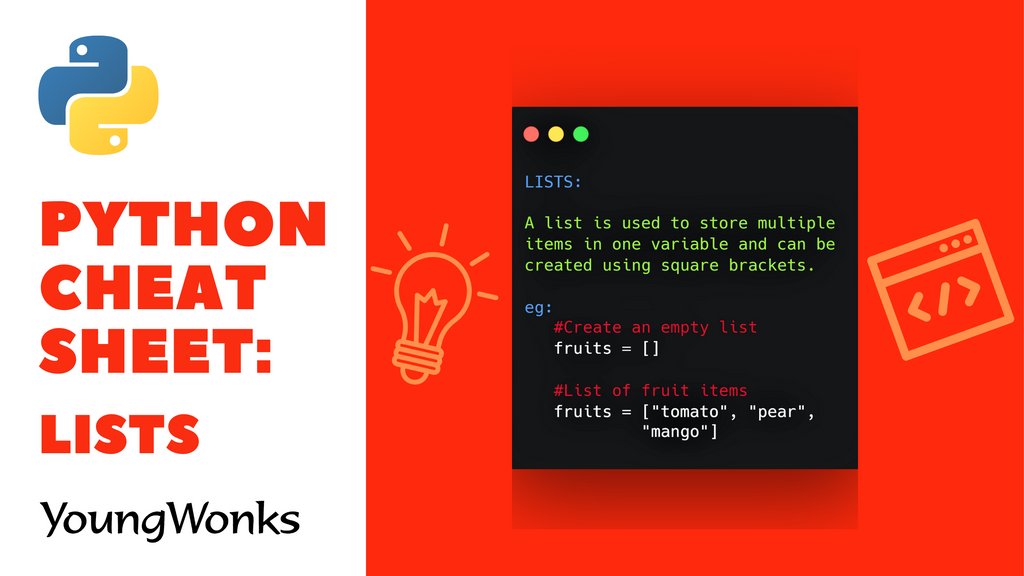
The #greater than (>) checks if the left #operand is greater than the right. Shared here is an example; follow us for more #bitesizedcodingwithYoungWonks #greaterthanoperator #pythonprogramming #kidscoding #learningresources #onlinelearning #STEM #Python #STEMkids #learnPython
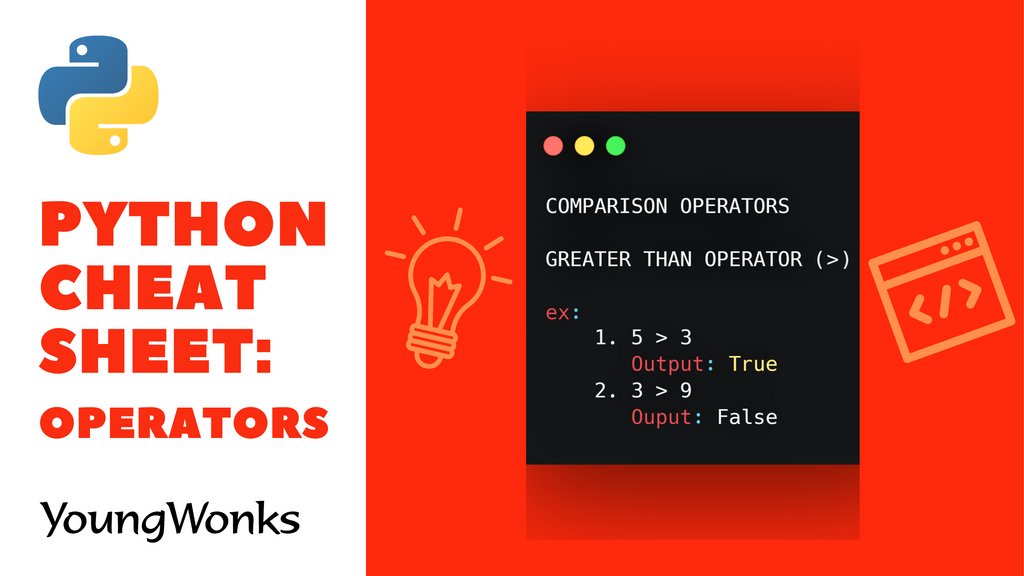
The greater than or equal to operator (>=) checks if the left #operand is greater than or equal to the right operand. Shared here is an eg. #operators #bitesizedcodingwithYoungWonks #pythonprogramming #kidscoding #learningresources #pythoncheatsheet #learntocode #STEMkids #python
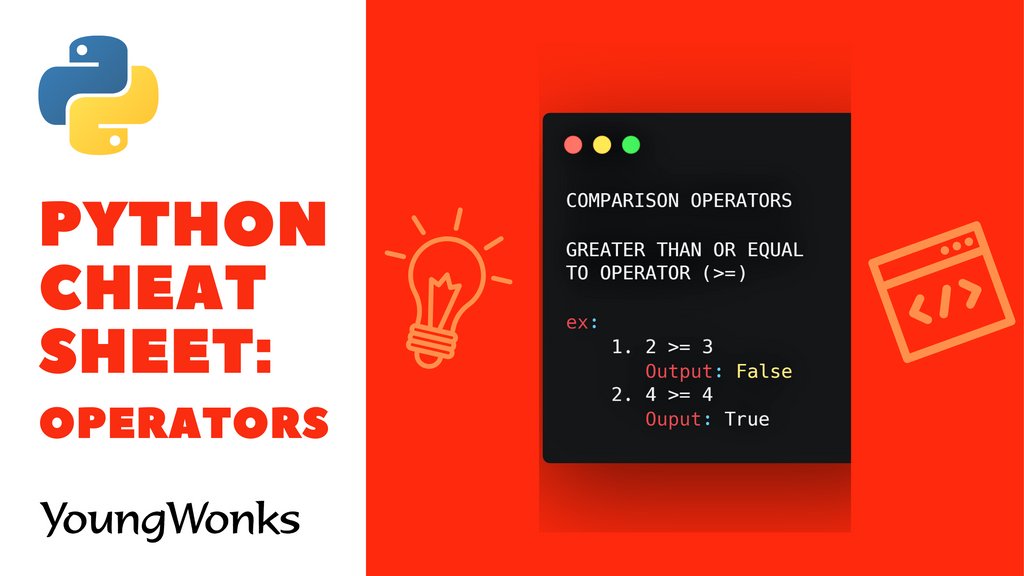
A #variable is like a container for storing data values. Shared here are a few examples. #datatypes #bitesizedcodingwithYoungWonks #pythonprogramming #codingforkids #learningresources #kidscoding #operators #python #pythoncheatsheet #onlinelearning #STEMkids

The #andoperator (and) returns True only if both of its #operands, the left and the right operands' conditions are True. Shared here is an eg. #bitesizedcodingwithYoungWonks #pythonprogramming #codingforkids #learningresources #python #codewithpython #onlinelearning #cheatsheet

The #inoperator checks if a value exists in a sequence or not. It evaluates to true if it finds the value in the specified sequence & false otherwise. Shared here is an eg. #bitesizedcodingwithYoungWonks #kidscoding #programming #learningresources #operators #python #STEMkids
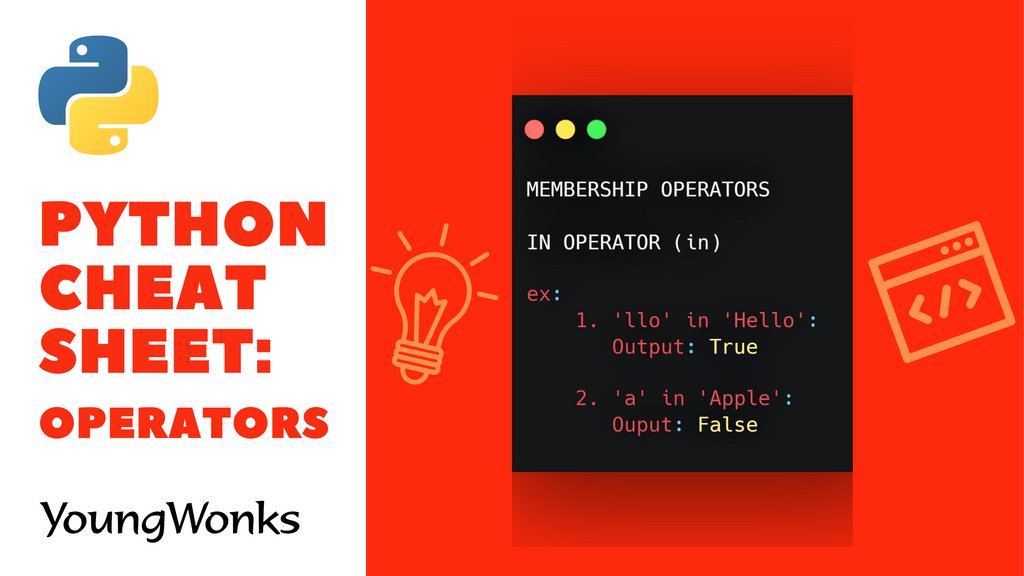
The #notinoperator is used to check if a value doesn't belong to a sequence. It evaluates to false if it finds the value in the specified sequence & true otherwise. Shared here is an eg. #bitesizedcodingwithYoungWonks #codingforkids #learningresources #operators #python #STEMkids

The #notoperator returns the negation of the result of an #operation. Shared here is an eg. Learn more at l8r.it/hUEy /#bitesizedcodingwithYoungWonks #pythonprogramming #codingforkids #learningresources #operator #python #pythoncheatsheet #onlinelearning
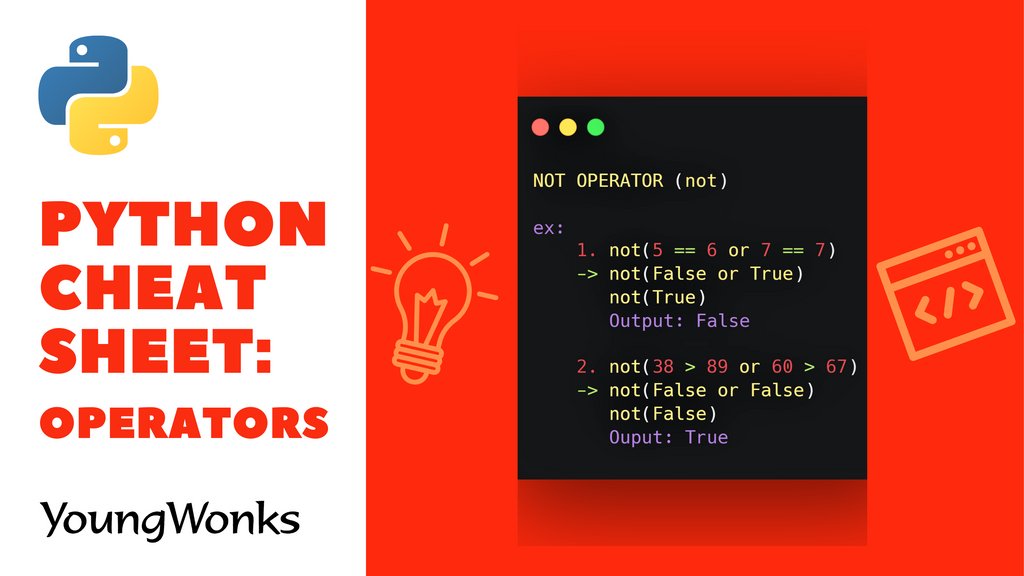
A #variable is like a container for storing data values. Shared here are a few examples. #datatypes #bitesizedcodingwithYoungWonks #pythonprogramming #codingforkids #learningresources #kidscoding #operators #python #pythoncheatsheet #onlinelearning #STEMkids

The #notinoperator is used to check if a value doesn't belong to a sequence. It evaluates to false if it finds the value in the specified sequence & true otherwise. Shared here is an eg. #bitesizedcodingwithYoungWonks #codingforkids #learningresources #operators #python #STEMkids

The #inoperator checks if a value exists in a sequence or not. It evaluates to true if it finds the value in the specified sequence & false otherwise. Shared here is an eg. #bitesizedcodingwithYoungWonks #kidscoding #programming #learningresources #operators #python #STEMkids

The #notoperator returns the negation of the result of an #operation. Shared here is an eg. Learn more at l8r.it/hUEy /#bitesizedcodingwithYoungWonks #pythonprogramming #codingforkids #learningresources #operator #python #pythoncheatsheet #onlinelearning

The #andoperator (and) returns True only if both of its #operands, the left and the right operands' conditions are True. Shared here is an eg. #bitesizedcodingwithYoungWonks #pythonprogramming #codingforkids #learningresources #python #codewithpython #onlinelearning #cheatsheet

The greater than or equal to operator (>=) checks if the left #operand is greater than or equal to the right operand. Shared here is an eg. #operators #bitesizedcodingwithYoungWonks #pythonprogramming #kidscoding #learningresources #pythoncheatsheet #learntocode #STEMkids #python

The #greater than (>) checks if the left #operand is greater than the right. Shared here is an example; follow us for more #bitesizedcodingwithYoungWonks #greaterthanoperator #pythonprogramming #kidscoding #learningresources #onlinelearning #STEM #Python #STEMkids #learnPython

The less than or equal to operator (<=) checks whether the left #operand is less than or equal to the right operand. Shared here is an eg. #bitesizedcodingwithYoungWonks #python #codingforkids #operator #codingforkids #learningresources #learnPython #stemkids #learntocode #STEM
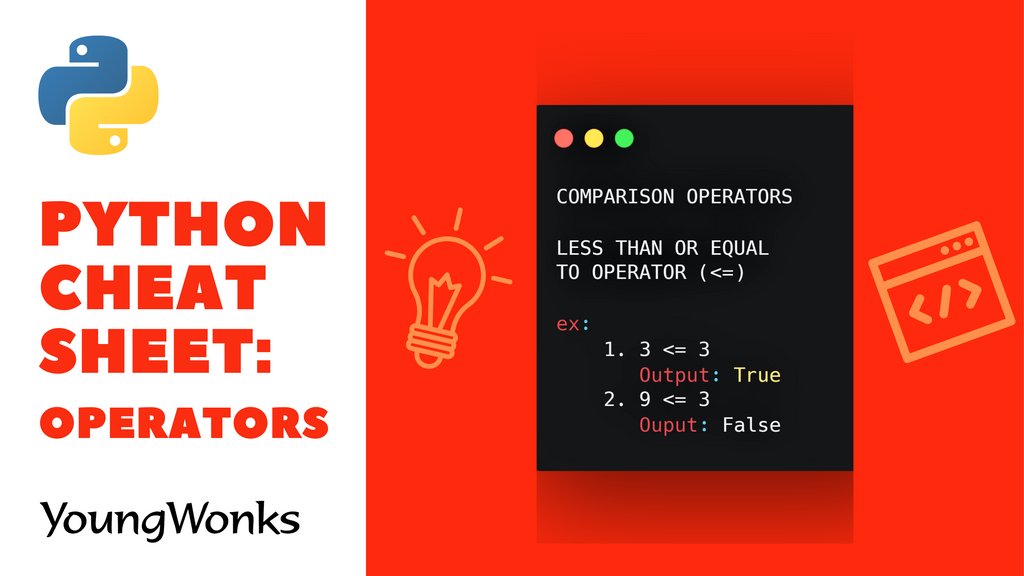
The #modulus operator (%) produces the remainder of its #operands where the left operand is the dividend & the right operand is the divisor. Here is an eg. Follow us for more #bitesizedcodingwithYoungWonks #python #codingforkids #learningresources #learnPython #stemkids #STEM

A list is used to store multiple #items. Shared here is an example of a list called Fruits. Follow us for more such #bitesizedcodingwithYoungWonks #pythonprogramming #kidscoding #lists #learningresources #pythoncheatsheet #Python #coding #programming

The #greater than (>) checks if the left #operand is greater than the right. Shared here is an example; follow us for more #bitesizedcodingwithYoungWonks #greaterthanoperator #pythonprogramming #kidscoding #learningresources #onlinelearning #STEM #Python #STEMkids #learnPython

The greater than or equal to operator (>=) checks if the left #operand is greater than or equal to the right operand. Shared here is an eg. #operators #bitesizedcodingwithYoungWonks #pythonprogramming #kidscoding #learningresources #pythoncheatsheet #learntocode #STEMkids #python

The #andoperator (and) returns True only if both of its #operands, the left and the right operands' conditions are True. Shared here is an eg. #bitesizedcodingwithYoungWonks #pythonprogramming #codingforkids #learningresources #python #codewithpython #onlinelearning #cheatsheet

A #variable is like a container for storing data values. Shared here are a few examples. #datatypes #bitesizedcodingwithYoungWonks #pythonprogramming #codingforkids #learningresources #kidscoding #operators #python #pythoncheatsheet #onlinelearning #STEMkids

The #notoperator returns the negation of the result of an #operation. Shared here is an eg. Learn more at l8r.it/hUEy /#bitesizedcodingwithYoungWonks #pythonprogramming #codingforkids #learningresources #operator #python #pythoncheatsheet #onlinelearning

The #inoperator checks if a value exists in a sequence or not. It evaluates to true if it finds the value in the specified sequence & false otherwise. Shared here is an eg. #bitesizedcodingwithYoungWonks #kidscoding #programming #learningresources #operators #python #STEMkids

The #notinoperator is used to check if a value doesn't belong to a sequence. It evaluates to false if it finds the value in the specified sequence & true otherwise. Shared here is an eg. #bitesizedcodingwithYoungWonks #codingforkids #learningresources #operators #python #STEMkids

Something went wrong.
Something went wrong.
United States Trends
- 1. Flacco 82.3K posts
- 2. Bengals 79K posts
- 3. Bengals 79K posts
- 4. Tomlin 21.4K posts
- 5. Ramsey 18.5K posts
- 6. Chase 105K posts
- 7. Chase 105K posts
- 8. #WhoDey 6,721 posts
- 9. #TNFonPrime 5,502 posts
- 10. #WhoDidTheBody 1,401 posts
- 11. Teryl Austin 2,703 posts
- 12. Cuomo 79.4K posts
- 13. #PITvsCIN 6,978 posts
- 14. #criticalrolespoilers 6,455 posts
- 15. Andrew Berry 3,162 posts
- 16. Max Scherzer 14K posts
- 17. Burrow 9,625 posts
- 18. DK Metcalf 3,914 posts
- 19. Zac Taylor 2,521 posts
- 20. Cincy 4,068 posts

